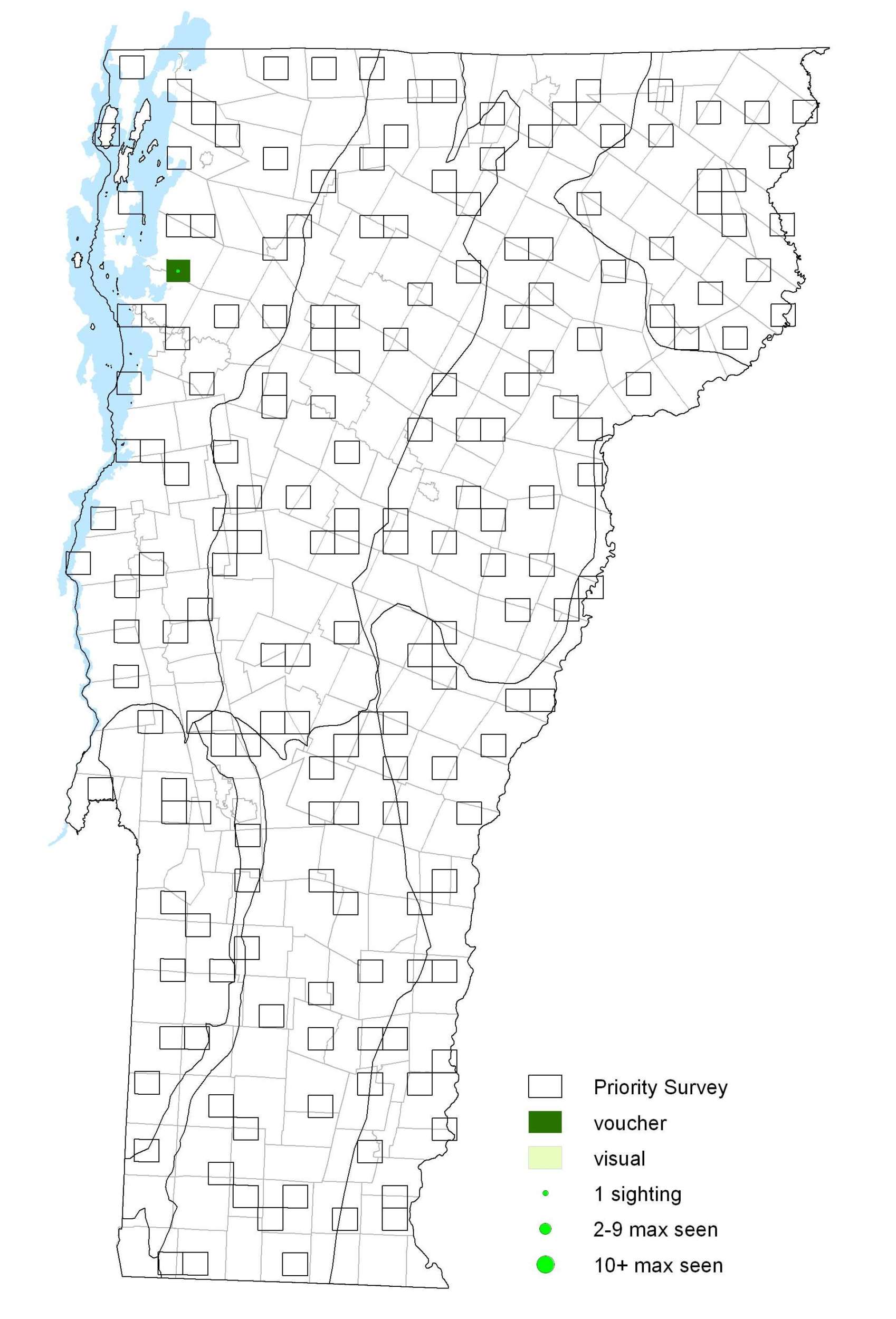|
Vagrant Conservation Status North American Range |
The Fiery Skipper, a southern species, is a vagrant to northern New England. Its breeding range is expanding northward however. Their generalist lifestyle allows them the flexibility to live in a wide array of natural and disturbed habitats. They are rapid fliers, active throughout the daylight hours and constantly seeking flowers to nectar. Males perch in lawns and grassy swales to wait for receptive females. Eggs are laid singly under hostplant leaves and also on other plants and objects. Caterpillars eat leaves and roll and tie them to make shelters, which lie horizontally in the sod.
Identification
Antennae are very short. Male wide black stigma. Underside of the hindwing is scattered with small black spots. Female: Upperside is dark brown with a very irregular orange band. Underside of hindwing is pale brown with paler checks.
Flight
Multiple broods in the south with northern records usually occurring in late summer or early fall. Two records known for Vermont. A male specimen in the Hartland Nature Club collection in North Hartland in 1899 and a second record during VBS on 18 September 2002 in Colchester (M. Gifford).
Distribution and Habitat
As a vagrant, they could be found just about anywhere if you are lucky enough to have a chance encounter. They prefer sunny, open areas such as lawns, fields and gardens. Caterpillar hosts are Bermuda Grass (Cynodon dactylon), Crabgrass (Digitaria) and St. Augustine Grass (Stenotaphrum secundatum). Adults will nectar from a variety of flowers including Milkweed (Asclepias), Aster (Aster), Thistle (Cirsium), and Knapweed (Centaurea).






